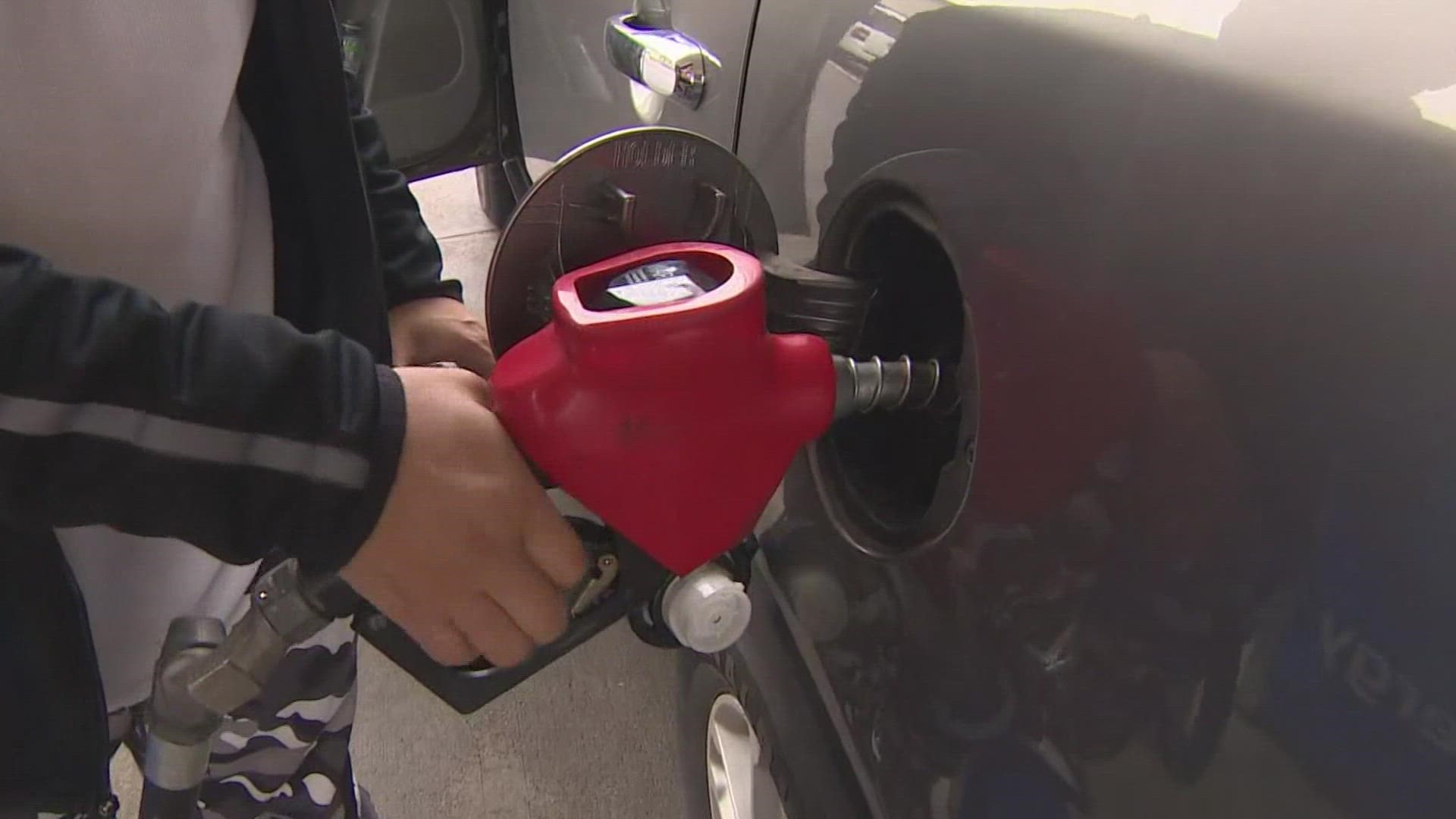HOUSTON — President Joe Biden announced new sanctions Tuesday against Russia, who he accused of beginning an “invasion of Ukraine”.
That same day, oil hit its highest price since 2014, reaching nearly $100 per barrel amid the tension in Europe.
According to AAA, Americans are paying an average of $3.53 per gallon. It’s lower in Texas at $3.21 per gallon. However, Houston-area experts warn both gas and food prices could rise if the conflict between Russia and Ukraine escalates.
Ed Hirs, KHOU 11’s energy expert, says Russia is the third-largest producer of oil in the world and exports 4.5 million barrels of oil per day.
“If one million barrels of oil or so, or one percent of the global market, gets shunted off to the war effort or is incapacitated for some amount of time, we could see the price of oil go up 20 to 25 percent,” said Hirs.
That’s an extra 50 to 75 cents per gallon at the pump.
Hirs says Russian President Vladimir Putin has some tremendous points of leverage over what the United States does.
“It’s not just that Putin can cut off the natural gas flow to Europe and hold NATO hostage,” said Hirs. “He can cut off an oil flow to the rest of the globe. He can cut off four-and-a-half million barrels a day of exports. That would drive the price of gasoline up tremendously, more than a dollar a gallon here, and he knows this is an election year.”
Higher energy prices also mean higher transportation costs for food.
“It’s possible that prices of wheat, in particular, could double,” said Gerard D’Souza, Ph.D., Dean of College of Agriculture and Human Sciences at Prairie View A&M University.
D’Souza says around 30 percent of the world’s wheat comes from Russia and Ukraine. He calls it the second-most important food crop in the U.S. behind corn.
“Food prices will increase but by roughly 10 percent, that neighborhood, because there are substitutes for wheat flour,” said D’Souza.
D’Souza says Russia also makes large amounts of key ingredients in fertilizer, which could also lead to higher food prices.
He believes the food supply overall will be fine because producers can use other ingredients. D’Souza also says it’s an opportunity for U.S. farmers to grow more wheat and grains to fill the gap.

